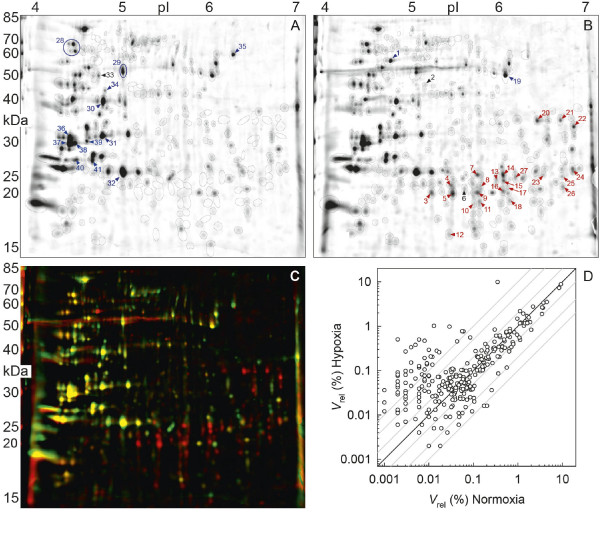Figure 1.
Two-dimensional protein gels from normoxia (A) and hypoxia (B) acclimated Daphnia pulex. Gel images represent fusion (average) images from a set of three (A) or two (B) biological replicates. Consensus spots used for comparison are encircled. Numbers indicate spots that were picked from the 2D gels for analysis by mass spectrometry. Spots identified as globin or non-globin material were labeled in red or blue. Black labels (spots 2, 6 and 33) indicate proteins that could not be identified. (C) Dual-channel representation of the gel images shown in (A) and (B). Protein spots of similar expression intensity appear in yellow. Red indicates that spots are much stronger or unique on the gel from hypoxia-acclimated animals, whereas green means that spots are much stronger or unique in the gel from normoxia-acclimated D. pulex. (D) Scatter plot showing the comparison of expression levels in the two fusion images (Vrel: relative spot volume). Protein spots that are strongly induced by hypoxia (approximately 50) are found in the upper left part of the graph.

